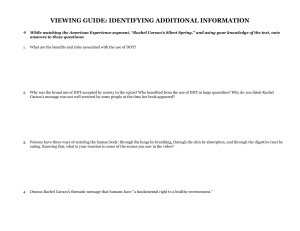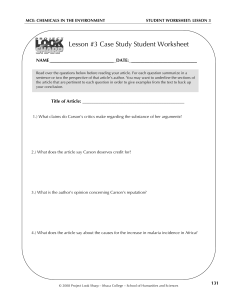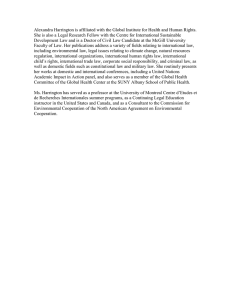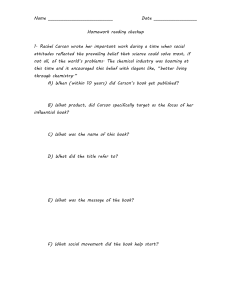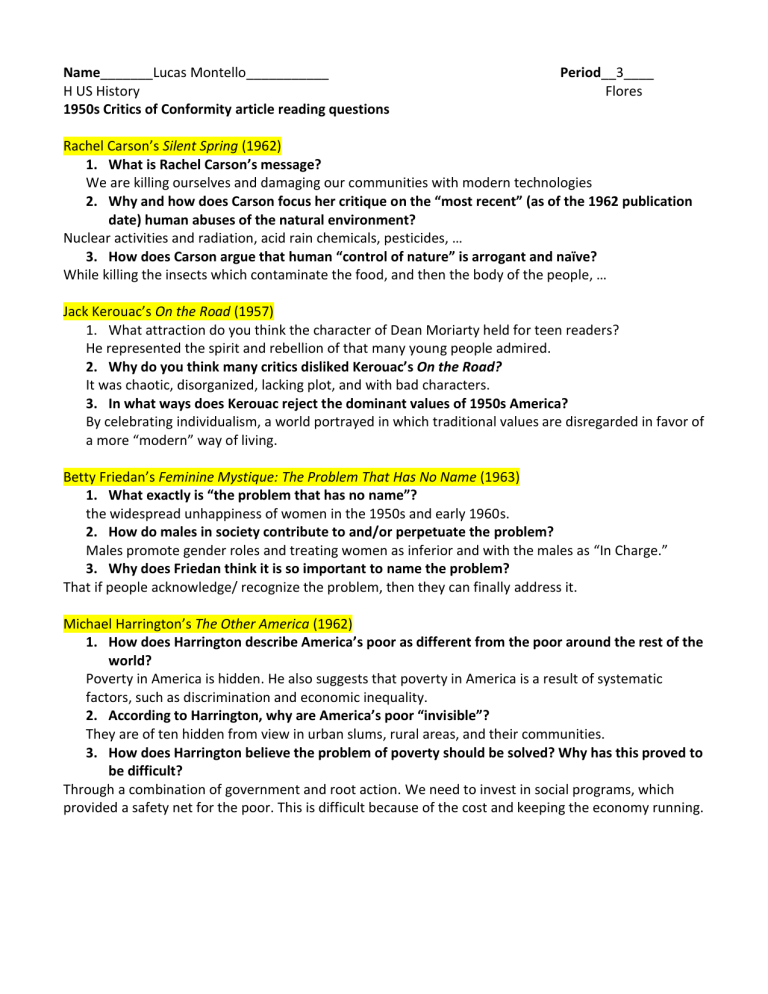
Name_______Lucas Montello___________ H US History 1950s Critics of Conformity article reading questions Period__3____ Flores Rachel Carson’s Silent Spring (1962) 1. What is Rachel Carson’s message? We are killing ourselves and damaging our communities with modern technologies 2. Why and how does Carson focus her critique on the “most recent” (as of the 1962 publication date) human abuses of the natural environment? Nuclear activities and radiation, acid rain chemicals, pesticides, … 3. How does Carson argue that human “control of nature” is arrogant and naïve? While killing the insects which contaminate the food, and then the body of the people, … Jack Kerouac’s On the Road (1957) 1. What attraction do you think the character of Dean Moriarty held for teen readers? He represented the spirit and rebellion of that many young people admired. 2. Why do you think many critics disliked Kerouac’s On the Road? It was chaotic, disorganized, lacking plot, and with bad characters. 3. In what ways does Kerouac reject the dominant values of 1950s America? By celebrating individualism, a world portrayed in which traditional values are disregarded in favor of a more “modern” way of living. Betty Friedan’s Feminine Mystique: The Problem That Has No Name (1963) 1. What exactly is “the problem that has no name”? the widespread unhappiness of women in the 1950s and early 1960s. 2. How do males in society contribute to and/or perpetuate the problem? Males promote gender roles and treating women as inferior and with the males as “In Charge.” 3. Why does Friedan think it is so important to name the problem? That if people acknowledge/ recognize the problem, then they can finally address it. Michael Harrington’s The Other America (1962) 1. How does Harrington describe America’s poor as different from the poor around the rest of the world? Poverty in America is hidden. He also suggests that poverty in America is a result of systematic factors, such as discrimination and economic inequality. 2. According to Harrington, why are America’s poor “invisible”? They are of ten hidden from view in urban slums, rural areas, and their communities. 3. How does Harrington believe the problem of poverty should be solved? Why has this proved to be difficult? Through a combination of government and root action. We need to invest in social programs, which provided a safety net for the poor. This is difficult because of the cost and keeping the economy running.
